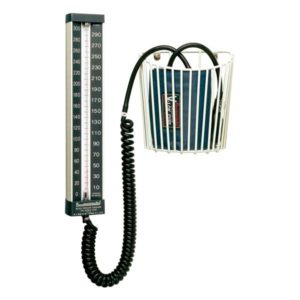 The recent Systolic Blood Pressure Intervention Trial (SPRINT) study (N Engl J Med 2015; 373:2103-2116) on hypertension in older adults provided solid data that lower blood pressure is better for you, even lower than the previous treatment standard.
The recent Systolic Blood Pressure Intervention Trial (SPRINT) study (N Engl J Med 2015; 373:2103-2116) on hypertension in older adults provided solid data that lower blood pressure is better for you, even lower than the previous treatment standard.
In particular, targeting systolic blood pressure of 120 or less in adults over 50 with higher baseline risk of cardiovascular disease provided substantial (20-40%) reductions in cardiovascular deaths and all-cause deaths compared to the previous treatment target of 140 systolic. SPRINT was a large study with over 9,000 participants for more than 3 years.
Why This Is a Bit Complicated
It was only about 50 years ago that the cooperative VA studies on hypertension demonstrated for the first time that high blood pressure was harmful and produced death and disability through stroke and heart attack. Since that time we have argued and labored to understand how rigorously we should attempt to control blood pressure.
In that half century, our pharmacological treatments have improved immensely, with more classes of drugs that more effectively lower blood pressure with fewer and fewer adverse effects.
SPRINT showed that the much lower pressures could be achieved with minimal increase in adverse effects even though 3 drugs rather than 2 drugs on average were required to achieve the lower treatment goal.
Just to add intrigue, a slightly older, excellent study on hypertension in older adults with diabetes as well as hypertension, ACCORD (N Engl J Med 2010;362:1575-1585), did not demonstrate reduced cardiovascular deaths from lower blood pressure targets.
What to Do?
The SPRINT data demonstrated 20-40% reductions in cardiovascular and all-cause deaths by achieving systolic pressures of 120 or so, compared to settling for under 140 (diastolic pressures typically are 70-85 in either case). That is an impressive safety improvement that I believe everyone should achieve. In addition, we do have the drugs to achieve it, overwhelmingly with minimal if any side effects, even though 3 or 4 drugs may be needed to do so effectively compared to 2 or 3 to attain the looser 140 systolic standard.
Hypertension typically shows up after age 50 and is highly prevalent in people over 70. Most of our Orchard Health Care members with hypertension already are at 120 systolic. But, based on SPRINT, we intend to carefully reevaluate any member whose blood pressure is much over 120 and to initiate or modify drug regimens, as well as to push harder on related lifestyle issues (exercise, weight, salt), to help everyone achieve the safer treatment goal of 120 systolic.

